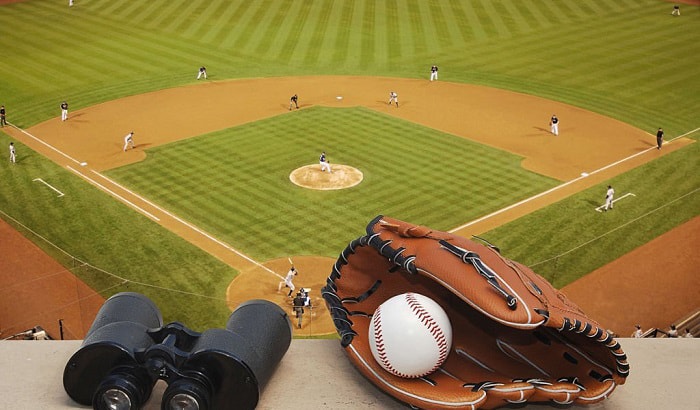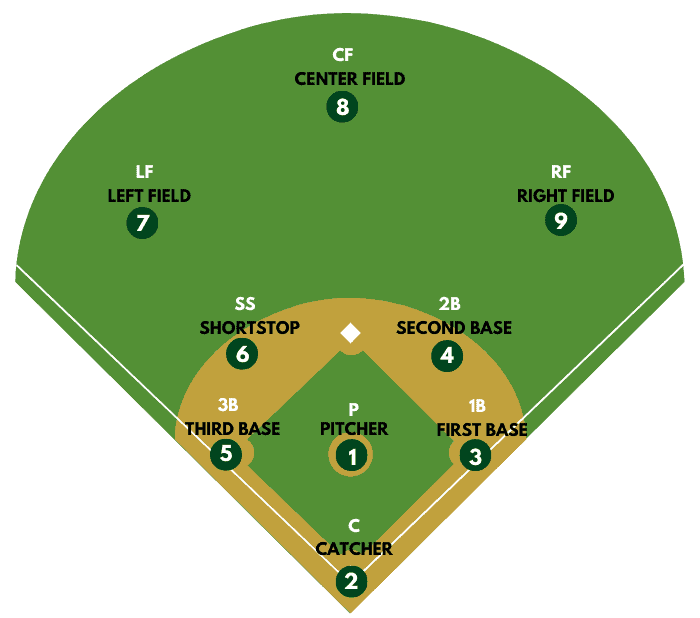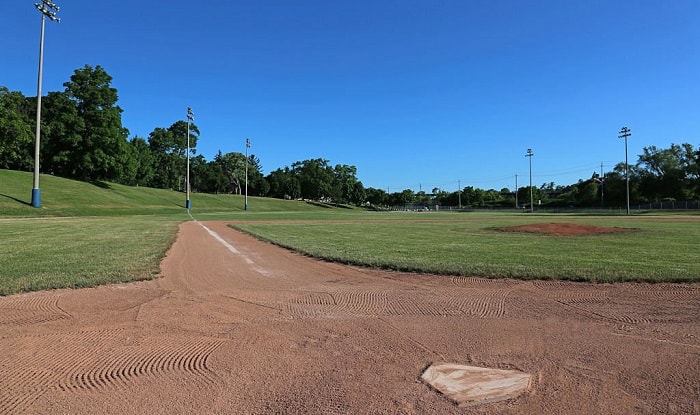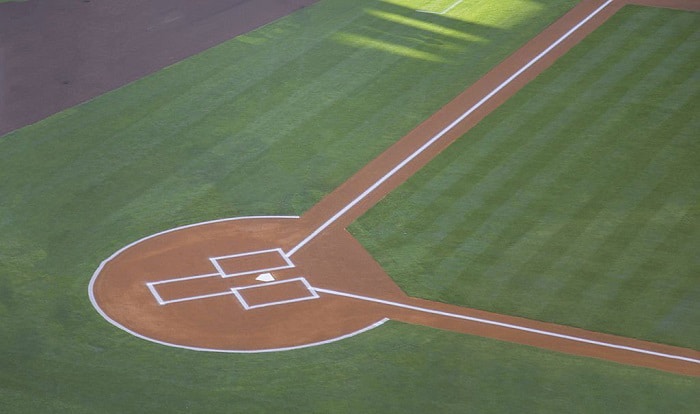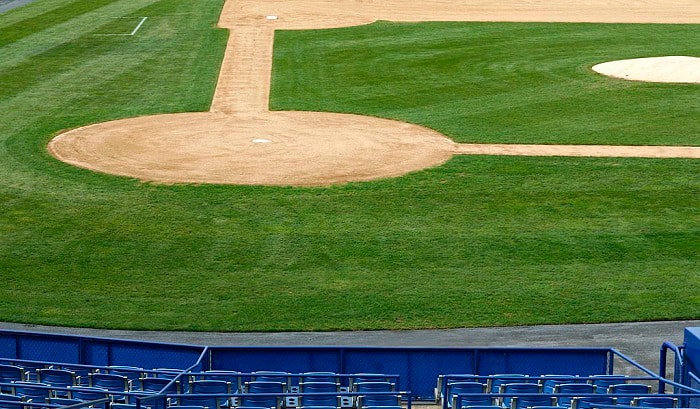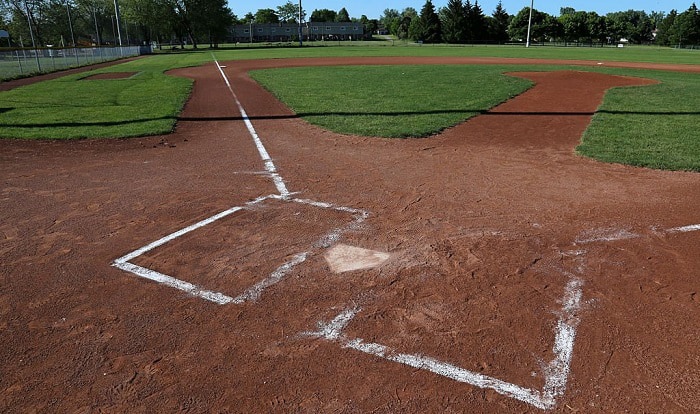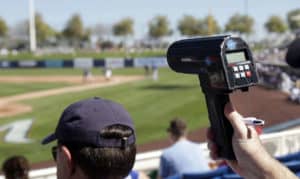In baseball, each player holds a position and needs to work together to make sure they move closer to their desired win!
A baseball team has nine players, and sometimes, the spotlight often focuses on the pitchers and hitters. But in the backlines, there are fielding plays that can make a massive difference in the game!
So, let us explore the left field vs right field in baseball! What role do these outfield baseball positions have?
Contents
What You Need to Know About the Outfield Position
The outfield position is one of the three general groups of baseball players. The collective groups in baseball are the outfield, infield, and battery.
Battery positions do not fall within the scope of this article. Instead, let us understand the infield vs outfield a bit more. These two have different dynamics in the game, and knowing them will make the roles of outfielders a bit clearer.
The three outfielders are responsible for catching fly balls. Meanwhile, the infielders focus on preventing runners from advancing.
Moreover, outfielders differ from infielders as the balls they receive have less predictable trajectories, requiring outfield players to react quickly and dive or run for the ball in little time.
In a team, three members are assigned to the outfield. There are the left, center, and right outfielders, with all position names corresponding to the players’ locations.
The Left Fielder: Position Description
Where is left field in baseball? The left fielder, sometimes shortened to LF, is a defensive player stationed on the left side of the ballpark. If you are standing on the home plate, your left is exactly where this section is.
On the left center field, LF and central fielders are next to each other.
Also, do not be confused with the well-known left field figurative meaning. Idiomatically, left field means something strange, but there sure is nothing unusual with baseball’s left fielders!
In games, they must be ready to provide backup against runners stealing third base. By knowing how to position themselves correctly, they can concentrate better on pitches that land over their area.
If you want to try out this position, know that right-handed throwers are usually positioned on the baseball left field. This gives them better cover when the ball from the infield flies in their direction.
Pros of Being a Left Fielder
- A lot more action than the right fielder because more balls go to them.
- Generally easier tasks than right fielders.
Cons of Being a Left Fielder
- Still, in contrast to infielders, a left fielder would see less action.
- Players need more throwing accuracy, which is harder to train.
The Right Fielder: Position Description
Now, onto the right fielder or the RF. You probably guessed it; this is the outfielder placed on the right side of the pitch, opposite the left fielder.
Similar to the left fielder, the right fielder needs to be swift and reactive to catch fly balls. They must prevent the balls from flying past them and into the foul line, as well advance their team’s runners.
The right fielder should also have some arm strength and preciseness, since their task is to throw the balls they caught in a wide area of around 250 to 300 feet.
If you look at it, the comparison between baseball field vs cricket size makes the former look smaller. A cricket field is about 50 yards longer than a baseball field. Still, this does not discount how much skill it takes to be a right fielder in baseball versus cricket!
In contrast to left fielders, a good position for left-handed throwers is the right fielder. But these players should be able to make successful long throws back to the third base and plate.
Pros of Being a Right Fielder
- If the batter is left-handed, it is easier to predict that balls would go to your location.
Cons of Being a Right Fielder
- Right fielders must have very strong ar
- Sees less action than the left fielder.
A Quick Comparison Between the Left and Right Field
Now that you have seen each in detail, let us see here a quick right field vs left field summary. First, you might have questions on positionings like is left field behind first base?
To answer this query, the left fielder is positioned behind the third baseman and shortstop, so he is between the second and third base. In contrast, the right fielder on the other side of the field is behind the first and second basemen.
The two positions have the same goal – they aim to catch batted balls that land in their designated areas. Aside from the need to catch these balls well, both positions need to have excellent throwing skills.
However, arm strength is more important for right fielders, while speed is more vital for left field players.
Frequently Asked Questions
Do more balls go to right field or left field?
If the hitter is right-handed, expect that they will swing the ball to the left side of the field. The dominance of right-handed players in baseball means that more balls are expected to swing to the left field!
What’s better: left field or right field?
Is right field or left field harder? Some would say that the left fielders have more action but, at the same time, could be harder for the player. Since more balls go to this side, they will find themselves getting most of the predictable fly balls.
On the other hand, the right fielders can be in the worst position because the ball going to this side of the field is less predictable.
How do you tell left from right field?
The field is assessed based on a player standing on the home plate and facing the pitcher. From this orientation, their left and right correspond to the playing field left and right.
Conclusion
We hope you now know the difference between left field vs right field in baseball.
Both positions have the same task but are positioned on different parts of the field. Still, they are expected to work with the team to achieve a win!
Also, with a bit of strategy and training, the positioning, performance, and team play with these outfielders can be sharpened for the team’s benefit.
Read more:

A powerful swing and the ball is flying across the field, just one hit, and we might never forget the thrill it brings. I do not know about you, but I never do. Every baseball game is the chance to compete with others and cooperate with your teammate. It is among my biggest passions.



